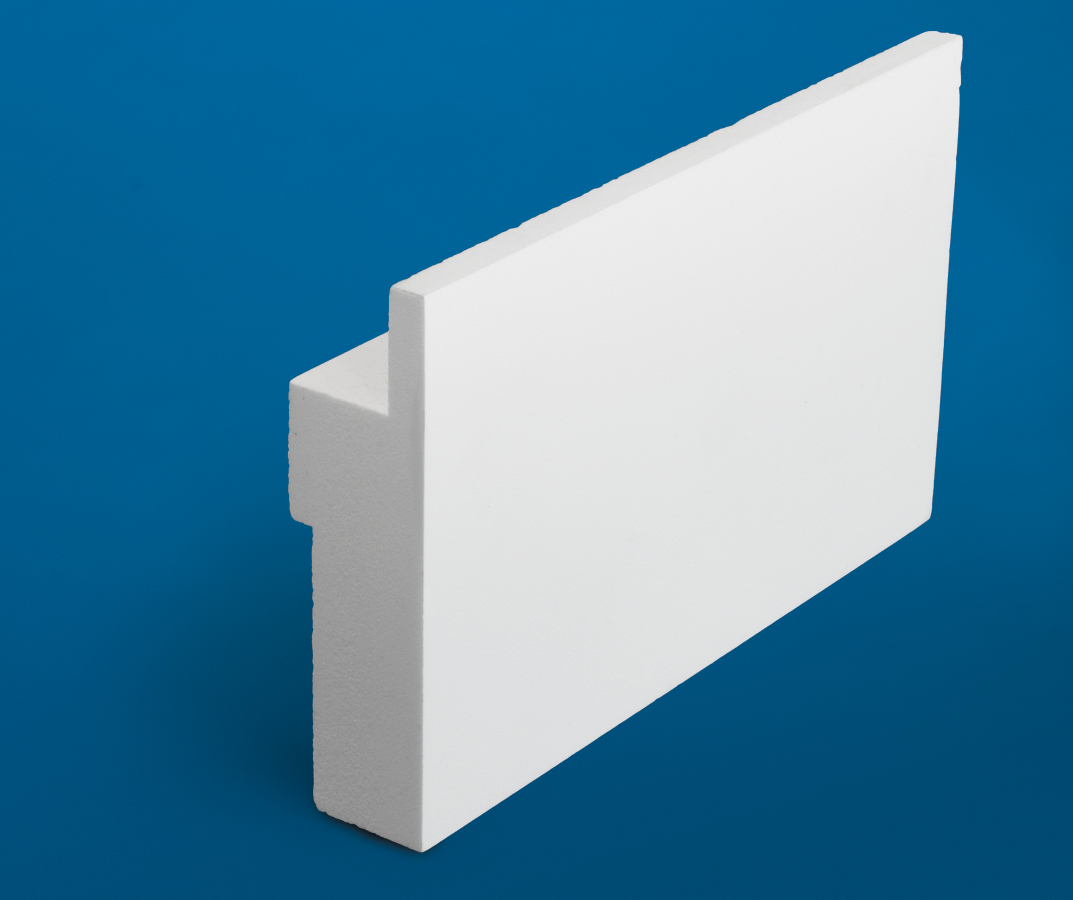CertainTeed achieved GreenCircle certification for its Restoration Millwork Exterior Trim, enhancing the sustainable appeal and environmental transparency of the product line.
The third-party certification was conducted by GreenCircle Certified, LLC, and the process included a comprehensive review of the manufacturing process and products, verifying the 21% recycled content of the product.
“Securing an independent third-party certification of the recycled content within our Restoration Millwork products reinforces our overarching commitment to environmental responsibility,” says Rick Brinton, marketing manager for Restoration Millwork at CertainTeed Siding Products Group. “In addition to GreenCircle certification, the long-lasting performance and durability of Restoration Millwork make it an ideal choice for sustainable building projects.”
In order to verify and certify recycled content claims, GreenCircle conducted a detailed evaluation of the Restoration Millwork product line and the company’s manufacturing operations in Social Circle, Ga. The claims were verified for conformance with International Organization for Standardization (ISO) 14021 Environmental Labels and Declarations requirements.
Made from cellular polyvinyl chloride, the full line of Restoration Millwork trim, beadboard and accessories is engineered to look, feel and work like top-grade lumber. Unlike wood, however, it is made with a long-lasting, low-maintenance material that is resistant to rotting, warping, moisture and insects. It can be cut using ordinary woodworking tools and fastened with nails or screws. It is highly resistant to yellowing caused by UV rays, resists freezing during winter months, features a Class A (Class 1) flame spread classification and is backed by a 25-year limited warranty. +
Related Stories
| Nov 10, 2011
Skanska Moss to expand and renovate Greenville-Spartanburg International Airport
The multi-phase terminal improvement program consists of an overall expansion to the airport’s footprint and major renovations to the existing airport terminal.
| Nov 10, 2011
Suffolk Construction awarded MBTA transit facility and streetscape project
The 21,000-sf project will feature construction of a cable-stayed pedestrian bridge over Ocean Avenue, an elevated plaza deck above Wonderland MBTA Station, a central plaza, and an at-grade pedestrian crossing over Revere Beach Boulevard
| Nov 10, 2011
Thornton Tomasetti’s Joseph and Choi to co-chair the Council on Tall Buildings and Urban Habitat’s Outrigger Design Working Group
Design guide will describe in detail the application of outriggers within the lateral load resisting systems of tall buildings, effects on building behavior and recommendations for design.
| Nov 9, 2011
Lincoln Center Pavilion wins national architecture and engineering award
The project team members include owner Lincoln Center for the Performing Arts, New York; design architect and interior designer of the restaurant, Diller Scofidio + Renfro, New York; executive architect, FXFOWLE, New York; and architect and interior designer of the film center, Rockwell Group, New York; structural engineer Arup (AISC Member), New York; and general contractor Turner Construction Company (AISC Member), New York.
| Nov 9, 2011
Sika Sarnafil Roof Recycling Program recognized by Society of Plastics Engineers
Program leads the industry in recovering and recycling roofing membrane into new roofing products.
| Nov 9, 2011
American Standard Brands joins the Hospitality Sustainable Purchasing Consortium
American Standard will collaborate with other organizations to build an industry-wide sustainability performance index.
| Nov 8, 2011
Transforming a landmark coastal resort
Originally built in 1973, the building had received several alterations over the years but the progressive deterioration caused by the harsh salt water environment had never been addressed.
| Nov 8, 2011
WEB EXCLUSIVE: Moisture-related failures in agglomerated floor tiles
Agglomerated tiles offer an appealing appearance similar to natural stone at a lower cost. To achieve successful installations, manufacturers should provide design data for moisture-related dimensional changes, specifiers should require in-situ moisture testing similar to those used for other flooring materials, and the industry should develop standards for fabrication and installation of agglomerated tiles.















